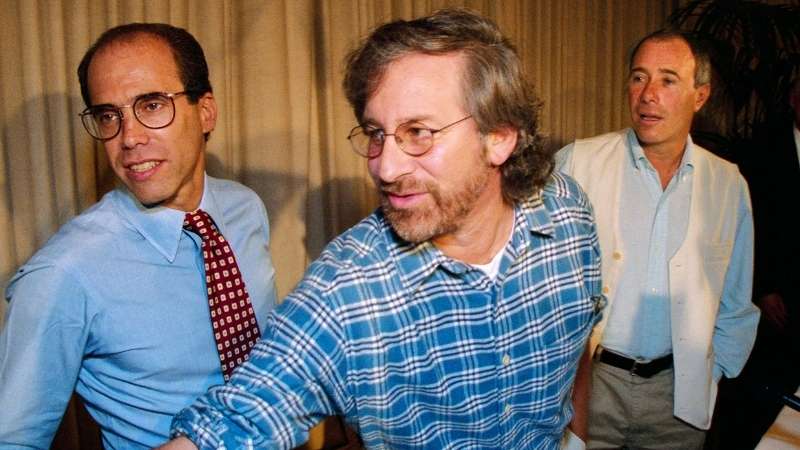Hollywood directors can earn anywhere from union-mandated minimums to massive paydays that rival A-list actors. Some secure multimillion-dollar deals upfront, while others take profit participation that brings in even more over time.
Independent filmmakers often work for little or no pay, struggling to break into an industry where box office success determines financial rewards. Every director’s earnings depend on reputation, studio budgets, and contract negotiations.
Some names command eight-figure sums before cameras start rolling. Others take calculated risks, betting on a percentage of profits that can lead to staggering payouts.
Key Insights
- Tim Miller made $225K for Deadpool, which grossed $782M—no backend profits.
- Steven Spielberg earned $250M+ from Jurassic Park due to a first-dollar gross deal.
- James Cameron made $350M+ from Avatar by taking a percentage of box office earnings.
Minimum Earnings Set by the Directors Guild of America (DGA)
Hollywood directors working under major studio contracts follow strict payment structures established by the Directors Guild of America (DGA). The DGA sets minimum wage standards for directors based on film budgets, employment duration, and distribution formats.

Baseline Pay for Studio Directors
| Film Budget | Minimum Weekly Pay | Minimum Employment Period | Total Minimum Earnings |
|---|---|---|---|
| Low-Budget (Under $2M) | $13,000+ | Varies | $50,000+ per project |
| Mid-Budget ($2M-$11M) | $15,000+ | 8-10 weeks | $150,000+ per project |
| High-Budget ($11M+) | $19,143+ | 10-12 weeks | $191,430+ per project |
Many first-time directors or those hired for franchise films receive studio-mandated pay regardless of a film’s financial success. Without backend deals or first-dollar gross contracts, some directors receive only their base salary even if their movie earns billions.
- Example: Peyton Reed, director of Ant-Man (2015), was contractually bound to a DGA-scale payment despite the film grossing over $500 million.
- Example: Tim Miller, director of Deadpool (2016), received $225,000 for the film, which made $782 million worldwide.
Guaranteed Employment Periods and Termination Clauses
DGA rules ensure a minimum number of contracted weeks for directors. Studios cannot fire a director without paying for the full contracted term, even if they remove them before filming begins.
- Guaranteed Pay: If a director signs a 10-week contract but is fired after 2 weeks, they still receive full payment.
- Reshoots and Post-Production: Directors often receive separate pay for reshoots and additional post-production work, though studios may attempt to avoid additional payments.
Do All Directors Follow DGA Minimums?
Not all directors abide by these minimums. Some independent filmmakers work for nothing upfront, betting on their film’s success. Others waive DGA protections for higher backend payouts.
- Example: George Miller initially accepted below-standard pay for Mad Max: Fury Road in exchange for greater backend earnings once the film became a hit.
- Example: Quentin Tarantino avoids standard studio pay structures by securing profit participation deals, making more from box office performance than salary.
Salaries of Hollywood’s Biggest Directors
Top directors command salaries that far exceed the Directors Guild of America (DGA) minimums. Big-budget studios compete for directors with a proven track record, offering massive upfront paychecks and profit-sharing agreements. Some directors secure eight-figure deals before production even begins.

Others gamble on backend participation, making their real earnings dependent on box office performance.
Highest-Paid Directors and Their Salaries
| Director | Film | Upfront Salary | Total Earnings (with Backend Deals) |
|---|---|---|---|
| Christopher Nolan | Oppenheimer (2023) | $20 million | $100 million+ |
| James Cameron | Avatar: The Way of Water (2022) | $30 million | $100 million+ |
| Steven Spielberg | Jurassic Park (1993) | $10 million | $250 million+ |
| Ridley Scott | Napoleon (2023) | $20 million | TBD (Profit-sharing deal) |
| Peter Jackson | The Lord of the Rings Trilogy | $10 million per film | $180 million+ total |
Not every director secures a massive paycheck. Salary differences depend on factors such as:
- Box Office Track Record: Studios pay more for directors who consistently deliver billion-dollar franchises.
- Backend Deals & Profit Participation: Some directors accept lower upfront pay in exchange for percentage-based earnings on box office revenue.
- Production Involvement: Directors who also write, produce, or oversee post-production often negotiate higher salaries.
- Streaming vs. Theatrical Releases: Streaming platforms offer flat payments, while theatrical releases allow for box office-based bonuses.
Streaming vs. Traditional Film Salaries
Netflix, Amazon, and Apple Studios have changed director salary structures. Instead of backend deals, streaming platforms offer flat, guaranteed payments to directors.
- Example: Martin Scorsese was paid $20 million to direct The Irishman for Netflix, with no box office bonus.
- Example: Rian Johnson earned $100 million for directing Knives Out sequels on Netflix, a flat deal with no backend earnings.
What Are Backend Deals?

Backend deals give directors a cut of the profits instead of relying solely on a fixed salary. These include:
- Box Office Gross Percentage – A share of ticket sales revenue.
- First-Dollar Gross – Earnings from total revenue before studio expenses.
- Deferred Payments – Lower upfront salary with additional payments after the film earns a set amount.
- Merchandising & Licensing Rights – Earnings from toys, games, and merchandise.
Biggest Backend Deals in Film History
| Director | Film | Upfront Salary | Total Earnings (After Backend Deals) |
|---|---|---|---|
| Peter Jackson | The Lord of the Rings | $10M per film | $180M+ |
| James Cameron | Avatar (2009) | $10M | $350M+ |
| Todd Phillips | Joker (2019) | $5M | $70M+ |
| Christopher Nolan | Oppenheimer (2023) | $20M | $100M+ |
| Steven Spielberg | Jurassic Park (1993) | $10M | $250M+ |
Directors Who Bet on Backend Profits
- Steven Spielberg secured a percentage of Jurassic Park’s profits instead of a larger salary, making over $250 million from the film.
- Todd Phillips accepted $5 million upfront for Joker but negotiated a profit-sharing deal, leading to over $70 million in earnings.
- James Cameron took a low salary for Avatar but earned $350 million due to box office success.
The Risk of Backend Deals
Backend deals are high-risk, high-reward. If a movie flops, directors make nothing beyond their base salary.
| Director | Film | Success or Failure? |
|---|---|---|
| Todd Phillips | Joker (2019) | $1B+ Success |
| M. Night Shyamalan | Lady in the Water (2006) | Box Office Flop |
| Peter Jackson | The Hobbit Trilogy | $100M+ Success |
Why Studios Prefer Upfront Salaries Over Backend Deals?
Studios limit backend deals to top-tier directors because they cut into long-term revenue. Many newer directors must accept fixed salaries before proving their box office value.
How Indie Directors Get Paid
Most independent directors step into filmmaking with no promise of a paycheck. Many pour everything they have into their projects, maxing out credit cards, borrowing money, and taking on side jobs just to scrape together enough to make a film.
Take Robert Rodriguez, for example. He couldn’t afford to fund his first film, El Mariachi, so he sold his body to science—literally. He volunteered for medical experiments to earn the $7,000 he needed to shoot his low-budget action film. The risk paid off when a major studio picked it up, turning his micro-budget project into a career-launching success.
Others take different routes. Some build connections at film festivals, hoping to sell their movies to distributors. Filmmakers like Kevin Smith, who maxed out multiple credit cards to make Clerks, relied on film festivals to get attention. After screening at Sundance, the movie was picked up by Miramax, making back its small budget many times over.
Crowdfunding has changed the game for many directors. Projects that once required major industry backing can now get financed directly by audiences. Filmmakers like Zach Braff and Spike Lee turned to Kickstarter, convincing thousands of people to donate money in exchange for early screenings, set visits, or even a producer credit.
Then there are the ones who don’t get paid at all. Some spend years making a film only to walk away with nothing but exposure. Brady Corbet, director of The Brutalist, admitted he didn’t earn a dime from his critically acclaimed film—even after it grossed millions. Many indie directors face similar situations, spending years on a project with no financial return.
Unexpected Pay Disparities in the Industry

Not every director who delivers a hit gets paid like one. Deadpool (2016) grossed $782 million worldwide, yet its director, Tim Miller, was paid only $225,000. The film became one of the highest-grossing R-rated movies of all time, but Miller, a first-time feature director, was locked into a low-end contract. Despite the film’s massive success, he did not receive any backend profits.
A similar case happened with Jon Favreau, who directed Iron Man (2008) and helped launch the entire Marvel Cinematic Universe. His salary? $2 million—a fraction of what the franchise would go on to generate.
Meanwhile, Robert Downey Jr., the film’s star, negotiated a backend deal that eventually earned him over $75 million. Favreau’s contributions to the franchise were monumental, but without a similar contract structure, his earnings were nowhere near what Marvel’s lead actors made.
When Directors Make More Than Their Crew – By a Lot
Some directors, on the other hand, negotiate deals so lucrative that they earn more than the entire crew combined. Michael Bay, known for his explosive blockbusters, is one of the best examples.
For Transformers: Dark of the Moon (2011), Bay made $80 million, mostly from backend deals, while the film’s visual effects teams—responsible for the CGI-heavy spectacle—were paid a fraction of that amount.
Another major gap happened with Steven Spielberg and Jurassic Park (1993). Instead of taking a standard salary, Spielberg negotiated a profit participation deal that ultimately paid him over $250 million. In contrast, the highest-paid actors on the film earned single-digit millions, and crew members saw nowhere near that kind of money.
Last Words
No rule guarantees a fair reward. Big studios reward reputation. Indie circles reward sacrifice. Some directors chase backend profits. Others lock in upfront pay. Every choice brings risk.
A career can change overnight. One film can open every door. Another can close them all. Directors who understand contracts, trust their value, and demand smart deals have the best shot at long-term success.
Box office hits do not guarantee big paydays. The biggest rewards go to those who know how to negotiate.


